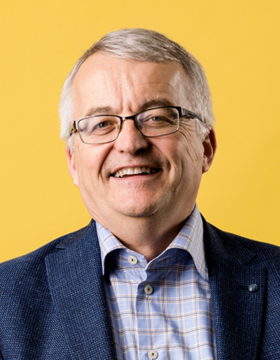OPG's ongoing journey of excellence: reaching carbon neutrality with nuclear
Plant Story
Vol 31 No 3 2021
15 December 2021
This article is based on a speech Sean Granville, CNO of Ontario Power Generation, delivered to WANO’s Global CNO Forum in June 2021. He discusses the contrasting plans for OPG’s plants; with Pickering to close but with Darlington to continue operations into the long term; with a shared goal to be the best performing fleet in the world.
 Ontario Power Generation is a nuclear power generator based in Canada. It has a fleet that consists of two large nuclear sites; the four-unit Darlington station and the six-unit Pickering Station, both located just east of Toronto, in the province of Ontario in Canada. Each site has a unique story and part to play in OPG’s journey.
Ontario Power Generation is a nuclear power generator based in Canada. It has a fleet that consists of two large nuclear sites; the four-unit Darlington station and the six-unit Pickering Station, both located just east of Toronto, in the province of Ontario in Canada. Each site has a unique story and part to play in OPG’s journey.
Pickering is the company’s oldest commercial nuclear power site with the units coming into service between 1971 and 1985. These units will reach end of life in the 2024-2025 timeframe. In the past few years, the plant has never operated better and OPG’s goal is to continue that improvement so that the last day of operation is the best day.
Darlington has operated for about 30 years and is undergoing a mid-life refurbishment, that CANDU reactors require, to support another 30 years of operation. This is a $12.8 billion ($CDN) project being executed in the middle of an operating nuclear plant. This investment in clean energy is part of OPG’s commitment to be carbon neutral by 2040.
It will be great to say that we're saving the world with nuclear. Two sites with two unique stories, but with a common purpose and goal - to be the best nuclear fleet in the world.
2019 and 2020 were the best in OPG’s fleet history in terms of safety, reliability, and business performance, supported by its WANO assessments.
But it wasn't always the case. Back in late 2015, my personal career journey intersected with the company. I was returning from a three-year secondment in another nuclear utility. Those three years changed my perspective. I learned a lot and was able to see things at OPG that I didn’t previously and my return to the company coincided with a ‘tough love’ message from WANO in the form of a corporate peer review. There were many plans with lots of activity, but insufficient focus on outcomes and results.
Issues lingered; there were managers burning out from overwork and workers passively waiting to be told what to do. Processes were like many other plants and fleets around the world, but the behaviour and accountability culture to drive those processes wasn't always there. In short, we accepted good performance but didn't challenge ourselves sufficiently to get to excellent performance. So, what did we do?
Firstly, I drew upon my experience at the other utility, where we had been in recovery situation that needed a culture change at the site. To do that, we produced a clear picture of excellence for the team, focused on leadership development, established common goals, had highly visible results updated daily, and constantly compared our performance to the best in the industry. And we implemented a communications plan that continually reinforced the plan and the positive behaviours that drove the improvement, and WANO was with us every step of the way.
So, that recent experience helped build a response to the AFIs identified in the corporate peer review. We developed a company-wide culture change initiative called “One OPG”. It comprised of key culture shifts, from focusing on plans and activities to focusing more on outcomes and results from technical leadership to facilitative leadership.
I believe in a saying from the environmental movement; “think global, act local”. Everyone in our team is action oriented and it is done as a fleet. We also focused on our leaders with targeted development, including rotational assignments to WANO, to nuclear oversight, and transfers between sites and departments. This broke down barriers between teams and gave individual leaders a much broader perspective of the business. High potential leaders were assigned to the International Senior Nuclear Plant Manager Program, now called “Leading Nuclear”, we run in conjunction with EDF Energy and WANO.
We worked with WANO Atlanta Centre to understand our gaps and put department excellence plans in place to address. The continuous monitoring process really helped, where every quarter we received an objective viewpoint of our performance across the business. This helped us request specific assist visits in areas such as operations, maintenance, and work management.
Quarter after quarter, these plants improved functional areas at each site, with those improvements reflected in our quarterly integrated plant summary report we received from WANO.
So, the last two years have been the best performing years in our history. But the challenges and opportunities to improve don't stop. The future is bright and as we continue our journey towards nuclear excellence, we can remind ourselves that we are saving the world!